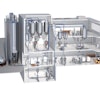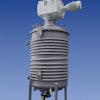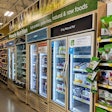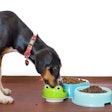
On July 6, China announced retaliatory tariffs on US goods, including canned dog and cat foods, in response to tariffs imposed by United States President Donald Trump. Even before those trade measures targeted US pet food exports directly, US tariffs on steel and aluminum were already threatening to raise costs for US pet food companies and consumers.
"Think about pet food manufacturers and how many cans are used for cat and dog food,” Dana Brooks, president and chief executive officer of Pet Food Institute. “Whenever people ask why does the Pet Food Institute care about what's going on with the Chinese tariffs or the steel and aluminum tariffs, I say think about how many cans of pet food come off of a line in manufacturing.”
Tariffs effects on foreign markets for US pet food
The tariffs on steel and aluminum could significantly affect pet food businesses as well as consumers, she said. Beyond manufacturing costs, a widening trade war with China and the potential breakdown of free trade among the US, Mexico and Canada could limit the access of US pet food brands to markets abroad.
“We’re always making sure that we have market access as well,” she said. “Most of our pet food consumption is domestic, but we're see the emerging markets in the future opening up to US pet foods. We have the highest food safety standards for pet foods in the world and we think that having Canada and Mexico as open markets is critical for transportation and trade. Fifty percent of homes in Canada have dogs, and they are probably purchasing US pet food.”
Mexican and Canadian pet food markets
Mexico’s pet food sales overtook Canada’s between 2012 and 2017, according to Jared Koerten, senior food analyst at Euromonitor International. The Mexican pet food market now ranks tenth with Canada in eleventh place. China now ranks as the twelfth largest pet food market. In 2012, the Middle Kingdom was ranked 19th.
The Mexican pet food market reached a volume of 1.215 million tons in 2017, said Ivan Franco, founder of Triplethree International Market Research. Dog food sales volume grew from 894,731 tons in 2016 to 947,493 tons in 2017. Dog food sales value increased from MEX44.4 billion to MEX49.9 billion during that same period. That represents a 5.9 percent increase in volume and a 12.5 percent increase in value.
Cat food sales volume also grew, going from 261,871 tons in 2016 to 262,556 tons in 2017. Cat food sales value rose from MEX16.6 billion to MEX18.0 billion between 2016 and 2017. Over those two years, cat food sales volume increased 0.30 percent, while value increased 8.3 percent.

















